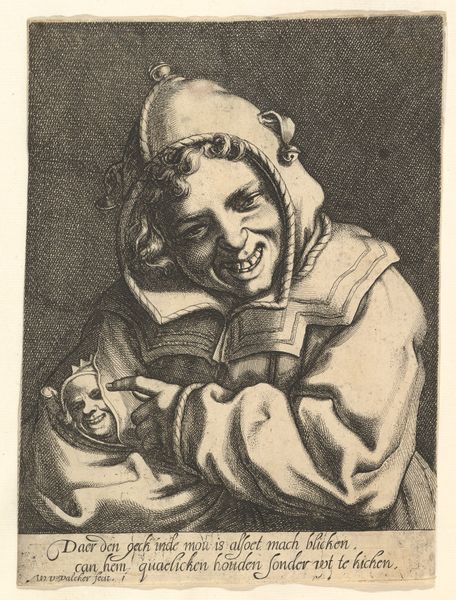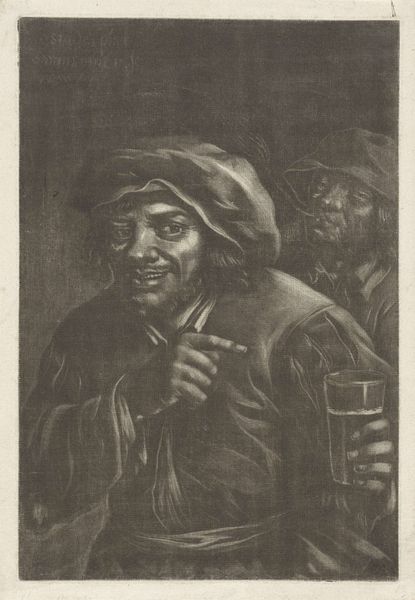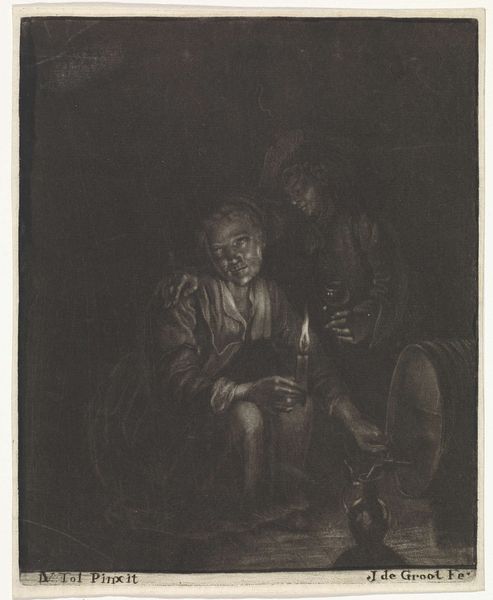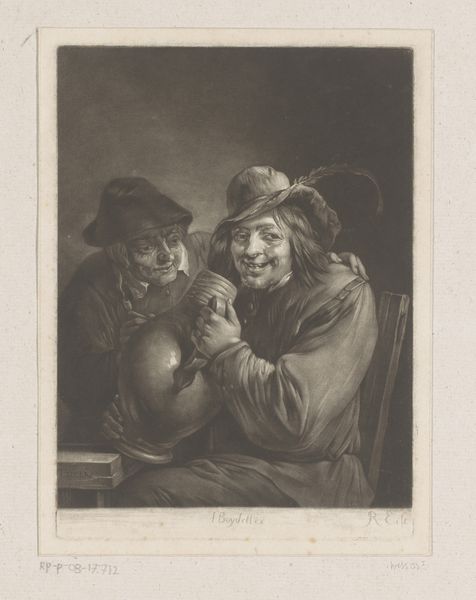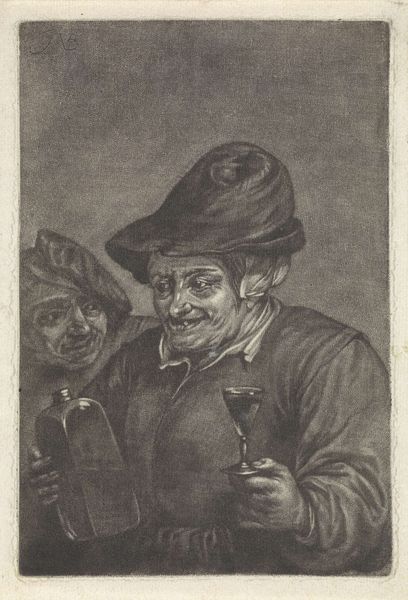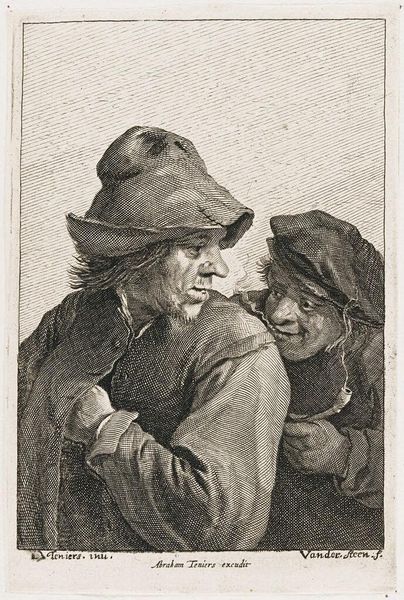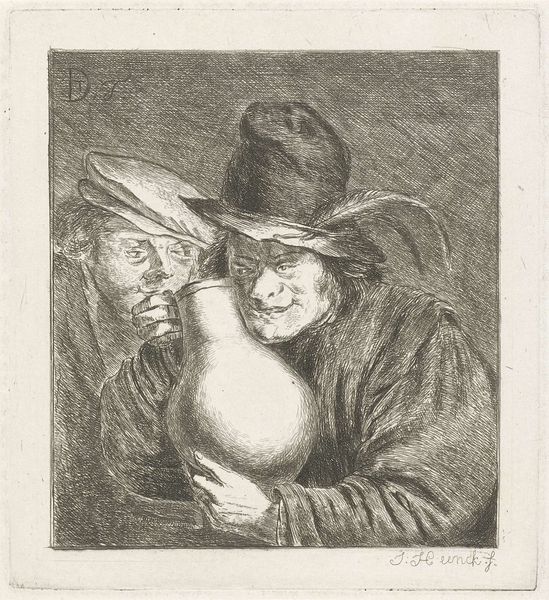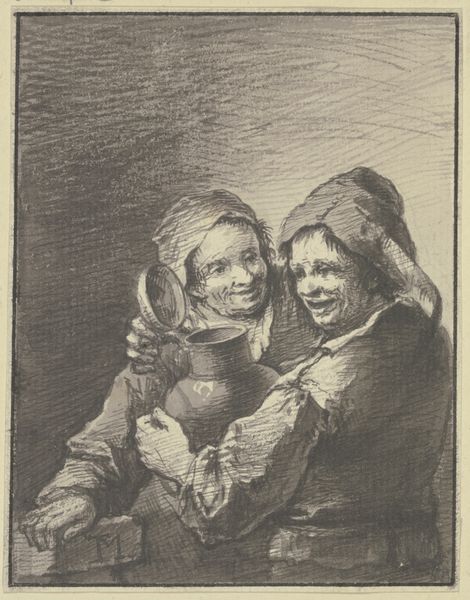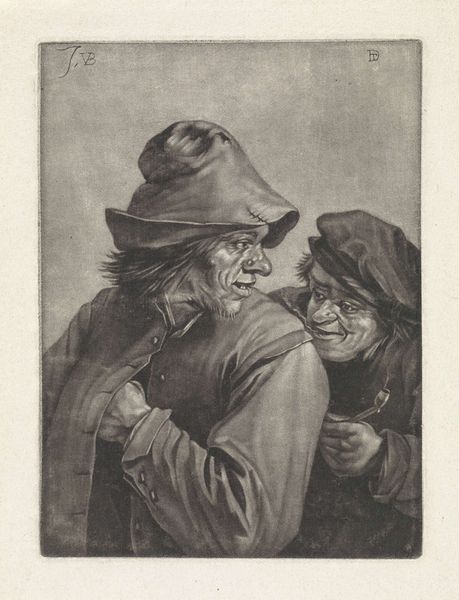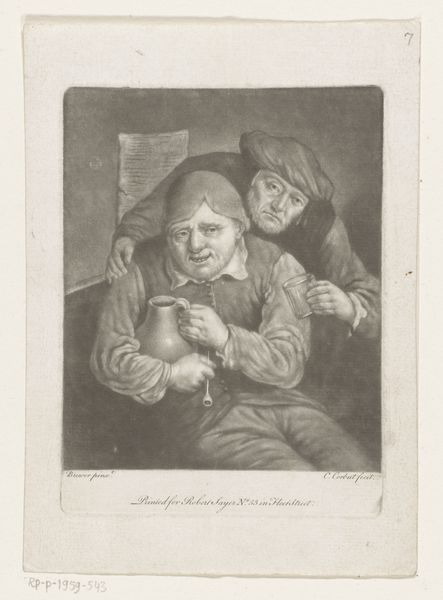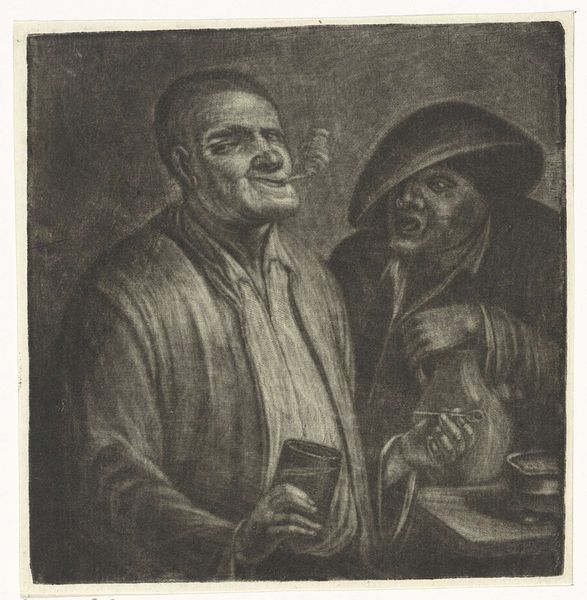
drawing, charcoal
#
portrait
#
drawing
#
dutch-golden-age
#
charcoal drawing
#
group-portraits
#
portrait drawing
#
genre-painting
#
charcoal
#
portrait art
Dimensions: height 240 mm, width 184 mm
Copyright: Rijks Museum: Open Domain
Curator: Before us is "Two Laughing Boys," a charcoal drawing attributed to Wallerant Vaillant, dating from around 1658 to 1677, here at the Rijksmuseum. Editor: I'm immediately struck by the raw joy of it. You can almost hear their laughter. It feels so spontaneous. And the scale; it’s a deceptively simple composition rendered in this very grounded, almost gritty medium. Curator: Indeed, it's captivating. Vaillant was well known for his use of mezzotint, a printmaking technique allowing for rich tonal gradations. Charcoal offers a similar textural depth in a more direct way. It’s interesting to see him experimenting and situates his work amidst broader shifts in print and drawing practices. Editor: You see, for me, the genius is in how he handles the charcoal, the quick, almost messy strokes that somehow manage to convey so much life. And that paper—I wonder about its origins. The way the charcoal sits on the surface would tell us much. The labor behind producing paper during that era… Curator: Absolutely, considering the socio-political climate of the Dutch Golden Age provides another layer. The rising middle class, eager to display their newfound wealth and status through art ownership, fuelled a demand for portraiture and genre scenes like this one. These two boys represent a particular slice of Dutch society. Editor: But what did their clothing cost? How readily available was charcoal? Vaillant cleverly obscures the material conditions while presenting such clear subjects. It would be valuable to analyze that interplay between surface illusion and production. Curator: From an art historical standpoint, Vaillant operated within a network of artists influenced by figures like Frans Hals, and this piece resonates with the dynamism found in Hals's looser brushwork. The choice to depict unidealized subjects—these aren’t aristocratic portraits—speaks to broader trends in Dutch art towards realism and relatable subjects for middle-class audiences. Editor: So, it all boils down to materiality—Vaillant’s choice and the context of its production and use – which gives it its enduring impact. A simple drawing offering immense socio-material insight. Curator: Agreed, these boys encapsulate the spirit of their time, shaped and framed by historical currents we continue to unpack through close study.
Comments
No comments
Be the first to comment and join the conversation on the ultimate creative platform.


